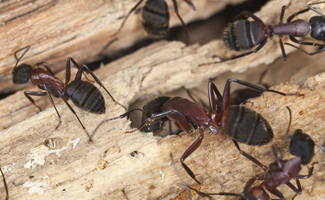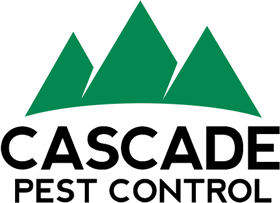Author: Kurt Treftz, Cascade Pest Control
 For many Seattle and Puget Sound residents, there are two primary types of ants that may become a nuisance in the home: the house ant, which forages for food indoors, and the carpenter ant, which lives within damaged parts of the home’s structure.
For many Seattle and Puget Sound residents, there are two primary types of ants that may become a nuisance in the home: the house ant, which forages for food indoors, and the carpenter ant, which lives within damaged parts of the home’s structure.
Carpenter ants typically arrive in force during the start of the summer, but may arrive a bit earlier or later depending on the temperature. Unlike house ants, which are more of a nuisance, carpenter ants in the home can be a sign of serious, underlying problems. Ahead, we’ll cover the facts you need to know about carpenter ants in the Seattle area, and what to do if you spot carpenter ants within your home.
Carpenter Ants 101: Learn What Makes Them a Problem
While the name may conjure images of termites, carpenter ants don’t actually eat the wood that makes up your home. Instead, they target wet, damaged areas of wood, where they can establish their colonies. They can, however, remove wood from the area, which can cause further damage and hollowing of the structure. Once a colony of carpenter ants is established within your home, it can be very difficult to find and eliminate.
- Carpenter ant colonies are often found in areas of the house that have already been damaged, and any area that has had a leak is a prime location to check for a colony. You will often find these areas in walls, and around the foundation of the structure.
- Since they colonize in out of the way places, it can be difficult to spot a colony of carpenter ants before significant damage has been done. That’s why it’s important to get an expert opinion, even if you only spot a few carpenter ants.
- How do you identify a carpenter ant? They are about 6 to 13 mm long, and come in a variety of colors. Carpenter ants can be all black, red and black, or brown, with the most common species in Western Washington being mostly black in color.
- Colonies start in damaged areas of the home, but can extend to sound structure over time. Colonies of carpenter ants often move from forested areas around the home, and into the home itself.
- Over time, carpenter ants can establish “satellite” colonies in other parts of the home, causing further damage away from the initial colony. Their preference for establishing more colonies in the same structure is a big part of the reason why carpenter ants are a risk for homeowners in our area.
Tips for Dealing with a Carpenter Ant Infestation
Keep Up with Home Maintenance
Since carpenter ants prefer to target damaged areas of the home, keeping up with home maintenance is also a key step in prevention. Conduct your own reviews of the home to look for leaks, and consider asking a contractor who you trust to review your home’s structure.
Professional Ant Control
While common house ants can sometimes be dealt with using DIY solutions, carpenter ants typically require help from the experts. Simply finding a carpenter ant colony can be challenging, and may require venturing into parts of the home that are difficult to reach. Eradicating a colony requires the tools and techniques of the ant control experts, so enlisting the help of a professional ant control company is the best thing you can do if you spot a potential infestation.
For the ant control side of the equation, our team at Cascade Pest Control is here to help you find and eliminate carpenter ant colonies in the Puget Sound area. We know what it takes to find the trouble spots, and to stop carpenter ants from doing any more damage to your home.
